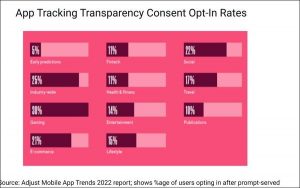— July 25, 2017
It’s too often the case that SEOs ignore market segmentation. Instead, they opt to reach people based on keyword interests. In this article, we’ll go over the concept of personas and explain how they’re an important part of your SEO strategy.
![Personas and SEO: What You Need to Know [Infographic] Personas and SEO: What You Need to Know [Infographic]](https://www.onlinesalesguidetip.com/wp-content/uploads/2017/08/01-Personas-and-SEO-What-You-Need-to-Know-Infographic.png)
Although that strategy will sometimes work, the fact is that there are people in multiple market segments who can be attracted to the same keyword. Sometimes, SEOs get around that (at least to some degree) by including negative keywords in their AdWords ads.
It’s not yet possible to include negative keywords in organic SEO, though. That’s why it’s important to go beyond restricting your target audience based solely on keywords and opt for personas as well.
What Are Personas?
Watch a short video.
Learn more in this infographic.
![Personas and SEO: What You Need to Know [Infographic] Personas and SEO: What You Need to Know [Infographic]](https://www.onlinesalesguidetip.com/wp-content/uploads/2017/08/02-Personas-and-SEO-What-You-Need-to-Know-Infographic.png)
Personas are descriptions of people who make up a part of your target market. A typical persona includes demographic information, interests, and current business or personal needs.
For example: Sue is a middle-aged married woman who lives in the suburbs. She’s part of a two-income household with older children and finds that she doesn’t have a whole lot of free time for housework. She’s looking for somebody to help clean the house at least once a week.
That’s a great example of a persona for a local cleaning business. Incidentally, personas apply to local SEO just as they would to any other type of SEO.
Personas are a great way to break your market down into various segments. Then, you can apply a different marketing strategy suitable for each segment.
For example, somebody else interested in cleaning services might be a landlord (let’s call him Bob) who owns numerous houses that he rents on a weekly basis. After a tenant leaves, he needs somebody to clean the house.
Clearly, the marketing strategy to reach Bob is different than the strategy to reach Sue mentioned above.
That’s why you would create personas for each one of them and follow a different marketing strategy for each persona.
What Does This Have to Do With SEO?
At this point, you might be asking yourself: “What does all this talk about market segments have to do with SEO? Isn’t that more suited to on-page conversion rate optimization?”
No.
You start with market segmentation before you even begin your marketing strategy. That includes your content marketing strategy.
Here’s the important part: if you know your market segment, then you can craft a content strategy that’s designed to reach that segment. That means for each article you’d create a title, meta description, and actual content designed to influence a specific persona within a market segment.
Your keyword research would also be driven by the personas you’ve identified. More on this in a bit.
Once you’ve created your persona-specific content, you can pull out all your neat SEO tools to rank it. People in the segment who see it will likely respond positively.
Learn about personas and the customer journey.
Getting back to the examples above, if you run a cleaning business, you might create two articles: one to reach Sue and one to reach Bob. Obviously, Bob and Sue have different needs so the articles would look different.
Then, you’d rank each article so that it’s likely to be seen in the search results.
Who Are You Talking To?
Suppose you ignored the concept of personas and just tried to rank an article with the keyword “cleaning services.” How would you write it?
You’d probably just extol the benefits of your business and it’s affordability. But you really wouldn’t be speaking directly to either Sue or Bob would you?
In other words, your marketing message would be somewhat muted because it’s too abstract.
![Personas and SEO: What You Need to Know [Infographic] Personas and SEO: What You Need to Know [Infographic]](https://www.onlinesalesguidetip.com/wp-content/uploads/2017/08/03-Personas-and-SEO-What-You-Need-to-Know-Infographic.jpg)
customer segmentation segment business concept marketing market people target vector
Think about this: in your typical content marketing efforts, who are you writing for?
Who do you think it is that’s reading your articles? Do you have any kind of impression of your reader or are you just writing for “them”?
If you aren’t writing for anybody, then you’re effectively writing for nobody. That’s a problem if you’re trying to reach people.
As the old saying goes: if you aim for nothing, you’ll hit it every time.
That’s why it’s important to have a persona in mind as you produce your content. You’ll find that you’re in a better position to not only speak that person’s language, but also convince the reader that you’re offering something of value.
More Than One Persona Per Segment
Thus far, we’ve noticed how personas help you segment your market. That might have led you to believe that there is one and only persona per segment.
That’s simply not the case.
In fact, a market segment can (and probably will) contain multiple personas. It’s a great idea to list as many personas as you can per segment.
For example, we’ve already seen the example of Sue, who’s part of the market segment that includes people who are just too busy to clean their own house. Sue is part of a two-earner household with children.
However, a single parent, who probably doesn’t have a whole lot of time to clean, could also benefit from cleaning services. So if you run a home-cleaning business, why not create content that’s relevant to single parents?
It’s also true that some personas can find themselves in multiple segments.
Pain Points
One of the most important aspects of creating personas is identifying their pain points. You want to know what’s bothering people in your target market, especially as it relates to what you’re offering.
As we’ve seen above, Sue is bothered by the fact that she doesn’t have time to clean her house. She comes home from a hard day’s work and, expecting to relax, instead finds a dirty carpet, an uncleaned bathroom, and un-mopped kitchen floor. It’s enough to make her day even worse when coming home should make her day better.
That’s a clear and present pain point for Sue, and one that you should milk all the way to the bank.
A good marketing message will often begin by agitating people. Then, it will portray your product or service as a hero riding in on a white horse to save the day.
Considering Objections
One point that’s not often covered when it comes to creating personas is the idea of thinking about how a persona might object to your sales message. That’s important because you need to answer that objection up front.
Let’s stick with Sue. She sees your marketing message about a cleaning service but thinks to herself: “I don’t want complete strangers in my house while I’m not there!”
That is, of course, a perfectly valid objection. And one which you, as a good marketer, should counter.
If you don’t counter it, then the objection stays in Sue’s mind and she’ll probably never become a customer.
So, in anticipation of that objection, you’d mention in your marketing message that all of your employees have gone through a background check conducted by local law enforcement. That should give some comfort to people like Sue.
Constructing Personas
Hopefully by now you’re sold on the idea of creating personas for your own marketing efforts. You also might be wondering how to do it.
Fortunately, it isn’t that hard. Here are a few ways to gather data to build personas.
![Personas and SEO: What You Need to Know [Infographic] Personas and SEO: What You Need to Know [Infographic]](https://www.onlinesalesguidetip.com/wp-content/uploads/2017/08/04-Personas-and-SEO-What-You-Need-to-Know-Infographic.png)
Surveys – Conduct user interviews and focus groups. Ask people pointed questions about problems they’re experiencing related to your niche. It’s probably best to outsource this kind of process to a company that specializes in market research.
Brainstorming – Get together with members of your team and come up with ideas for personas. First, start by highlighting the needs of potential customers. Then, go on with ideas about demographic and psychographic info. Finally, gather data to support the claims made in the first two sessions. Once you have weeded out the invalid ideas, you’re clear to build personas based on the suggestions from team members.
Tools – As a good marketer, you’ve almost certainly got a variety of tools at your fingertips. Use those tools to construct personas. For example, visit the “Demographics” section in Google Analytics (It’s found under “Audience”) and check out the demographic info of people who visit your site. Even better, check out the Affinity Categories (the overall interests of your visitors) and In-Market Categories (what your visitors are shopping for right now).
Social Media – Social media sites offer you a wealth of analytics that you should use to build personas. Head on over to Facebook Business Manager and check out the Insights tab. Click on “People” on the left-hand sidebar to pick up some helpful demographic info about the people you’re reaching. Also, be sure to visit Twitter Analytics and check out the Audiences tab. You’ll find a goldmine of information about your followers right there.
Customer feedback – Hopefully, you’re already gathering feedback from customers. You usually use it to improve the quality of your service and/or gather ideas for new products. You should also use that feedback to develop personas. Specifically, look for people to tell you what problems your company solved.
Customer reviews – People often let their hair down when delivering reviews. You can learn a lot about their personal lives and why it is they became a customer. Mine your online reviews for information that can help you construct personas.
Persona-Driven Keyword Research
Once you have your personas created, it’s time to go back to SEO 101 with keyword research. However, you’re going to filter the results of your research with data from your personas.
It’s usually the case that SEOs use a tool like SEMRush to grab keywords relevant to their domain. Then, they find the keywords that represent the lowest hanging fruit (that is, they’re easiest to rank for with little competition) and create a content strategy centered around those keywords.
Unfortunately, that strategy is generic. It’s really just a scattershot effort at trying to reach as many people as possible who are typing a keyword into a search bar.
The “all keywords for all people” strategy follows a marketing fallacy: that the bigger market is always the best. That’s simply not true.
Instead, it’s best to create a strategy that appeals to one of your personas.
So here’s what you should do: start by gathering keywords that each persona is likely to use in an online search. If you’re conducting surveys as noted above, it’s perfectly fine to specifically ask your audience which keywords they would use.
Also, feel free to take the Venn diagram approach. Find an intersection of keywords that your tools gave you and keywords that your personas are likely to use.
Once you have persona-specific keywords, it’s time to get busy with your content strategy. From there, it’s as simple as creating content that will resonate with people in your market segments.
Guest Posting
You probably already know that guest posting is a great way to boost brand-name awareness and get backlinks to your site. You can also do some persona-driven guest-posting to give your brand even more reach.
How? Find out which blogs your personas like to frequent. Then, reach out to those webmasters and ask about guest-posting possibilities.
You get a huge bonus when you follow this strategy. First, you get the normal benefits of guest-posting. Plus, you also reach people who are in one of your market segments with a blog post that’s tailored to their interests.
That’s marketing on steroids.
Wrapping It Up
It’s important to build personas not only so that you can segment your market, but also so that you can adapt your SEO strategy to people in each segment. With a focused approach to reaching potential customers, you’re more likely to get the edge over the competition.
Digital & Social Articles on Business 2 Community
(59)



